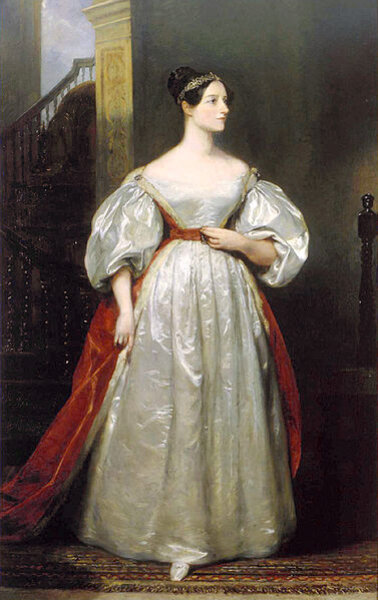Though many of these women worked on computers as they began to enter the mainstream, one woman was programming before computers even existed. Ada Lovelace was born in 1815 the daughter of English poet Lord Byron and Anne Isabella Byron. Though her father died when she was young, her mother had a keen interest in mathematics and pushed her daughter to pursue the same. Ms. Lovelace showed an early aptitude and impressed tutors like Charles Babbage, a mathematician who first began conceptualizing the computer, who asked her to translate an Italian paper on his ideas for a Swiss journal. This translation gave her the opportunity to ruminate and add her own notes, which were published along with the original paper. According to her biography, the notes explain "how codes could be created for the device to handle letters and symbols along with numbers" and described the theory where a machine could continuously execute instructions, which today is known as "looping". Giving true meaning to the cliche "ahead of her time", Lovelace's ideas were largely ignored during her life, and she died in 1852. However, her notes were rediscovered and published in the 1950's, and since then she has become a symbol of successful women in technology, inspiring an award in her name, a coding language used by the US Department of Defense, and a day celebrated in her honor.
 Mark Sappenfield
Mark Sappenfield
Dear Reader,
About a year ago, I happened upon this statement about the Monitor in the Harvard Business Review – under the charming heading of “do things that don’t interest you”:
“Many things that end up” being meaningful, writes social scientist Joseph Grenny, “have come from conference workshops, articles, or online videos that began as a chore and ended with an insight. My work in Kenya, for example, was heavily influenced by a Christian Science Monitor article I had forced myself to read 10 years earlier. Sometimes, we call things ‘boring’ simply because they lie outside the box we are currently in.”
If you were to come up with a punchline to a joke about the Monitor, that would probably be it. We’re seen as being global, fair, insightful, and perhaps a bit too earnest. We’re the bran muffin of journalism.
But you know what? We change lives. And I’m going to argue that we change lives precisely because we force open that too-small box that most human beings think they live in.
The Monitor is a peculiar little publication that’s hard for the world to figure out. We’re run by a church, but we’re not only for church members and we’re not about converting people. We’re known as being fair even as the world becomes as polarized as at any time since the newspaper’s founding in 1908.
We have a mission beyond circulation, we want to bridge divides. We’re about kicking down the door of thought everywhere and saying, “You are bigger and more capable than you realize. And we can prove it.”
If you’re looking for bran muffin journalism, you can subscribe to the Monitor for $15. You’ll get the Monitor Weekly magazine, the Monitor Daily email, and unlimited access to CSMonitor.com.







